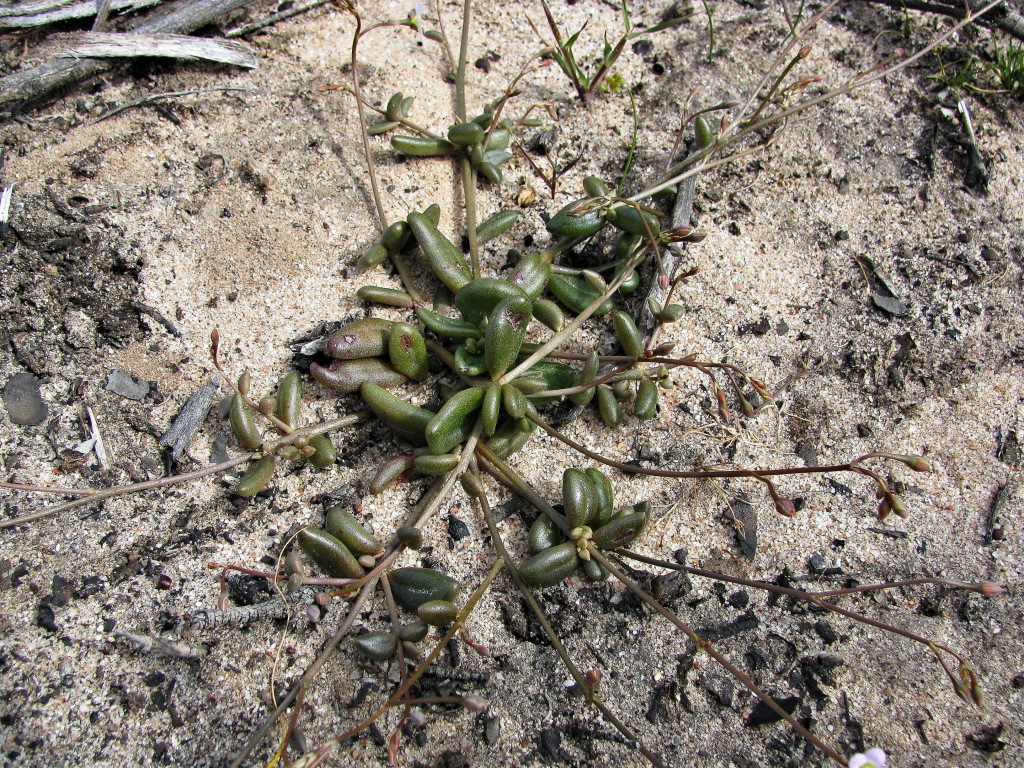Calandrinia eremaea
Ewart Small PurslaneProstrate or weakly ascending, often pink-stemmed annual, stems to c. 20 cm long, simple or few-branched. Leaves often ± rosetted at base, often absent from stems, oblong to narrowly elliptic, the largest 1–5 cm long, 2–8 mm wide, subsessile, glabrous. Cymes elongating, mostly 3–7-flowered; bracts opposite; pedicels 6–12 mm long at anthesis, elongating to 2.5 cm or more and slightly to strongly reflexing in fruit; sepals very broadly ovate, 2–3.5 mm long, obtuse (rarely shortly apiculate), persistent; petals 5, 3–7 mm long, white to deep pink; stamens 7–20; style trifid to base. Capsule ovoid, 3.5–4.5 mm long, pale, splitting almost to base into 3 valves; seeds numerous (more than 30), reniform, c. 0.5 mm long, shining, dark red-brown or greyish, colliculate. Flowers Aug.–Oct.
LoM, MuM, Wim, VVP, VRiv, MSB, RobP, MuF, GipP, OtP, Gold, CVU, DunT, NIS, EGU, HSF, HNF, MonT. All mainland states. Abundant in sandy mallee and samphire communities in the north-west, particularly after fire or other disturbance, scattered elsewhere in mild to warm and relatively dry areas of the state where occurring on sand, or commonly in shallow soils on rock-ledges etc. (e.g. Werribee Gorge, Warby Ranges, upper Snowy and Genoa Rivers). .
Walsh, N.G. (1996). Portulacaceae. In: Walsh, N.G.; Entwisle, T.J., Flora of Victoria Vol. 3, Dicotyledons Winteraceae to Myrtaceae, pp. 215–224. Inkata Press, Melbourne.
 Spinning
Spinning


